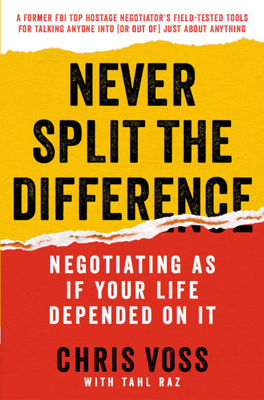Trigger the Two Words That Immediately Transform Any Negotiation
The Power of "That's Right" in Negotiations
Introduction and Background: Chris Voss, experienced in crisis negotiations, introduces the Behavioral Change Stairway Model (BCSM), which progresses through active listening, empathy, rapport, influence, and ultimately behavioral change. This model, rooted in the psychological principles of Carl Rogers, focuses on understanding and acknowledgment as precursors to influencing behavior and decisions.
Case Study - Jeffrey Schilling Kidnapping: Voss applies his negotiation expertise to the kidnapping of Jeffrey Schilling by Abu Sayyaf in the Philippines. The kidnappers demanded a $10 million ransom, initially assessed as war damages, not a simple ransom.
Strategic Use of Active Listening Techniques: To shift the negotiation dynamics, Voss and his team employed multiple active listening techniques: - Effective Pauses: Silence to let the counterpart express more. - Minimal Encouragers: Short verbal affirmations to show attention. - Mirroring and Labeling: Repeating and acknowledging the counterpart's statements and emotions. - Paraphrasing and Summarizing: Rephrasing the counterpart's viewpoints, combining understanding with emotional acknowledgment.
Breakthrough with "That's Right": The pivotal moment occurred when the kidnapper expressed agreement with a summarization of his perspective and emotional state with the words "That’s right." This acknowledgment marked a turning point where the kidnapper no longer viewed the negotiation as adversarial but felt understood, leading to a shift away from his initial demands.
Outcomes and Tactical Victory: Post the "That's right" moment, the kidnapper ceased his monetary demands, and the situation evolved favorably, leading eventually to Schilling’s escape orchestrated by Philippine commandoes. The kidnapper's acknowledgment of the negotiation tactics further validated the effectiveness of achieving "That's right" over a mere "yes".
Contrast with "You're Right": Voss also draws a clear distinction between "That's right" and "You're right," noting that the latter often signifies superficial agreement without deep acceptance or commitment to change. He illustrates this difference through personal anecdotes, reinforcing that "That's right" leads to genuine agreement and cooperation.
Applications Beyond Hostage Negotiations: The chapter culminates with examples demonstrating how the principles of reaching "That's right" in negotiations can be applied in various fields such as sales, career advancements, and personal interactions, stressing the universal relevance of this negotiation approach.
Key Takeaways: - Real behavioral change in negotiations is catalyzed by creating a moment of agreement without coercion, best exemplified by achieving a "That's right" response. - Successfully navigating toward "That’s right" involves comprehensive listening and acknowledgement strategies, transforming the negotiation dynamic. - The principles underlying successful negotiation in crisis scenarios are broadly applicable, offering valuable insights for daily communications and professional interactions.
